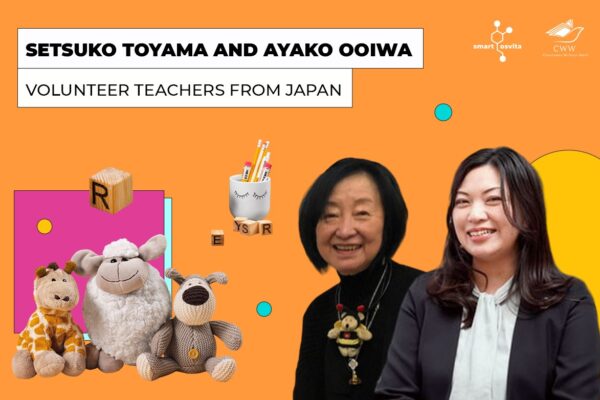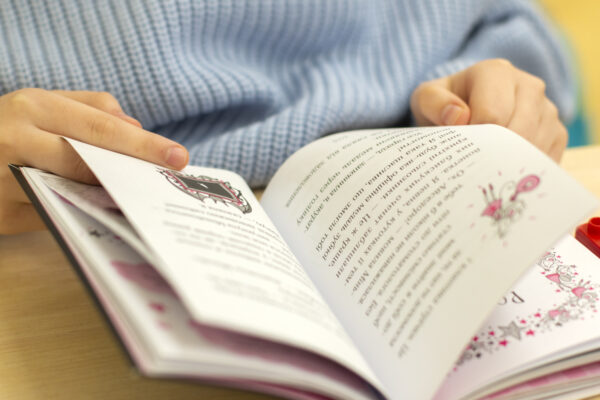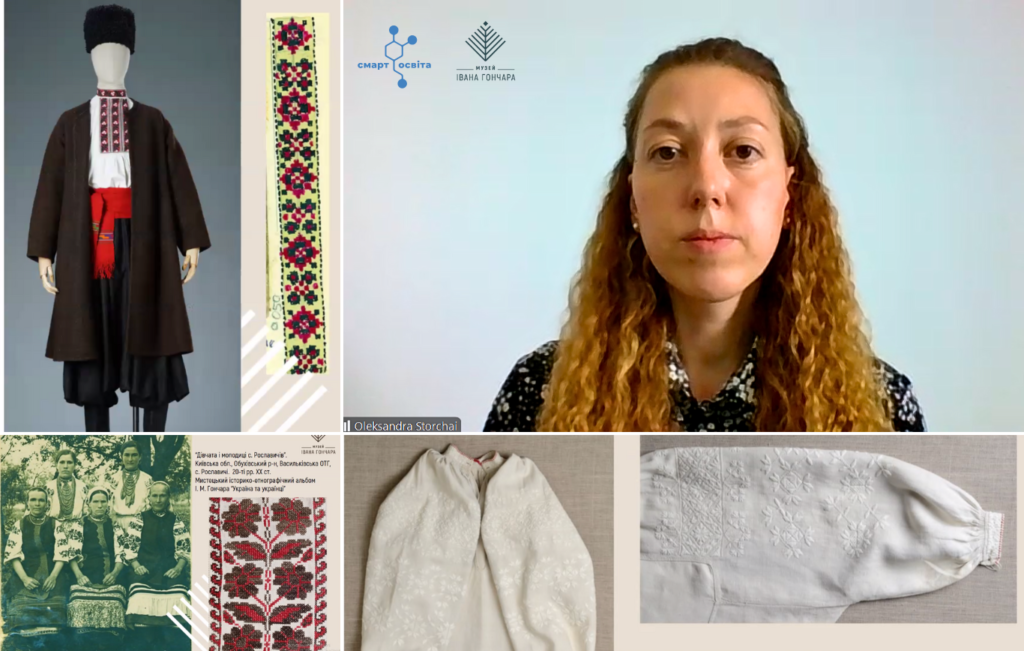

More than 200 ancient stitches based on 20 embroidery techniques exist in Ukraine, and they can be seen in traditional Ukrainian clothing. Children and adults could learn about this and many other things at the meeting with Oleksandra Storchay, a researcher of folk clothing, who talked about traditional clothing in Dnieper Ukraine and the Kyiv region in the late XIX-early XX centuries.
The lecture was exclusively devoted to the Independence Day of Ukraine in partnership with “Smart Osvita” and the Ivan Honchar Museum within the project “Ukraine Speaks English”.
Oleksandra Storchay is a senior researcher at the Ivan Honchar Museum. She started by talking about symbolic embroidery motifs and went on to talk about the diversity of male and female attire: sleeved corsets, belts, bodices, ochipoks, mantles, and also about the fact that the cut of the outer elements of the suit was usually the same for men and women.
“Quite often the cut or the style for the outer clothes was not different for men and women. Currently we see a trend, when designers return to this concept, which we have had for a long time in our traditional clothing: a T-shirt or a shirt would be uniform for both men and women,” says Olksandra Storchay.
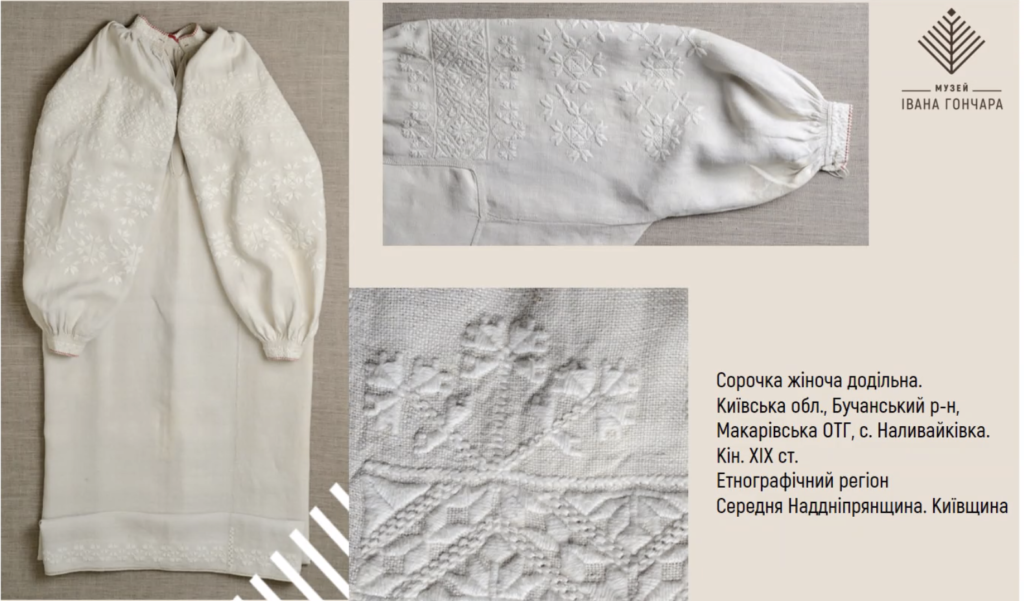
The researcher talked in more detail about the traditional colours of folk clothing – red and black – and highlighted the fact that the black could have been abundantly present in the embroidery. As for our ancestors this colour was associated not with sadness, but with the earth, abundance and welfare.
The foundation for a traditional suit, both for men and women, was a long embroidered shirt, whose bottom part also served as underwear. Our ancestors used more than two hundred techniques for embroidered shirts, which fit into 20 main technologies, and the main elements were geometrical ornaments that had a symbolic meaning and served as amulets. Gradually, these techniques were supplemented with the so-called “Brocard style embroidery,” which had floral elements as its foundation.
Henry Brocard was an entrepreneur who produced soap and perfume, and painted floral motives in checkered promotional cards: knapweed, lily, mayweed. These cards inspired peasants to implement a new embroidery technique – cross-stitch.
According to Oleksandra Storchay, Henry Brocard enriched our ancient geometric decor with floral motives, and on the verge of the XIX–XX centuries, you could see how these two ornaments were combined in one shirt.
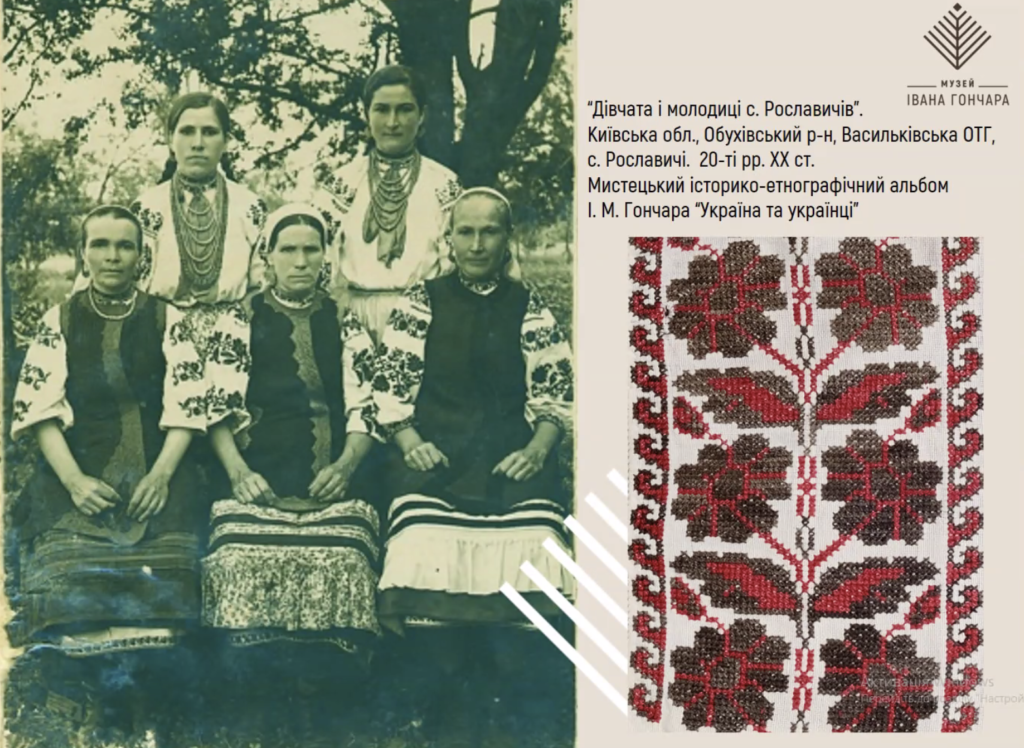
Moreover, in many photos, you can notice how male clothing is more rapidly changing into urban style, while women remained faithful to traditional clothing for a longer period:
“Male attire is changing more quickly, as men travelled more and were more dynamic, so they wanted their clothes to be very comfortable. But this is also connected with a painful phenomenon of the war: in the army men wore military uniform, and they could not put on embroidery below, as the shirts had to be the same. And when they came back from the frontlines, they would no longer wear traditional folk clothes,” says Oleksandra Storchay.
She has also observed that the clothes of the more affluent population and those of the peasants were different only in the more expensive fabric, abundance, and diversity of the embroidery, while the foundation was the same:
The cut of the clothes for the richer people was no different from that of ordinary peasants of the middle class, but the richer the person was, the better quality of the fabric they wore. Quite often, the same shirt or the sirwal-trousers were made from more expensive imported textile, and they may have been more abundantly embroidered with silk or metalized threads,” says Oleksandra Storchay.
You can listen more about each of the elements of the attire and why women would grease the fabric of the ochipok with dough in the recording of the broadcast.
The meetings are conducted within the project “Ukraine Speaks English”.
The project is implemented by NGO “Smart Osvita” in partnership with «Classrooms Without Walls»/Teachers for Ukraine


